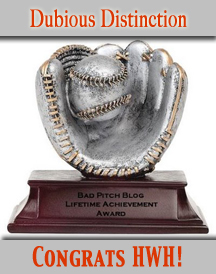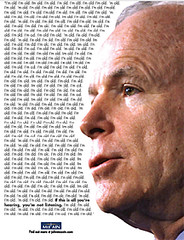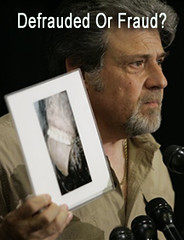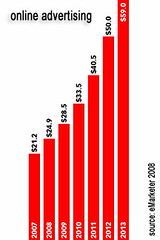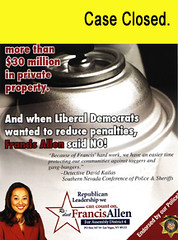It will be interesting to see what impact, if any, BlogWorldExpo on Sept. 20-21 will have on my Social Media for Communication Strategy class, sponsored by the University of Nevada, Las Vegas and Las Vegas Chamber of Commerce, on Friday, Sept 26.
Much like last year, it will likely depend on the speakers. After all, social media sometimes comes across as being an inch deep and a mile wide even though it really is a mile deep within the context of strategic communication.
Right on. The long tail of social media need not wag the company dog.
When put in the right context, the value of social media for the public and private sector is easy enough to understand. When it is not, I cannot blame decision makers for being skeptical about the satire that is all too often presented as fact. Applied without the Kool Aid, social media tends to look more like this ...
Five Critical Facts About Social Media That Businesses Need To Know.
• Social media reaches more people and shapes more opinion than all other paid and unpaid media combined.
• The online population represents 90 percent of all adults, with online demographics in lock step with offline demographics by age, gender, ethnicity, income, and education.
• Active participation is not an accurate measure because content consumers outnumber content creators in the United States by 4-to-1.
• While there seem to be many rules in social media, the only one that seems to stand the test of time is authenticity, which makes sense because that concept in communication predates social media.
• Social media analytics are always interesting, useful, and insightful. Yet, none of them means anything.
Five Critical Trends That Are Shaping Social Media Today.
• Social media is trending toward mobility at an exponential rate, especially as Apple continues to push mobile technology forward.
• The bar on quality original content will continue to be raised as entertainment producers and magazine publishers turn their attention online with the hope of salvaging advertising revenue.
• The modern concept between citizen journalism and professional journalism will continue to evaporate, with some citizen journalists employing social media as their entry into the profession.
• Companies will come to terms with social media, but will continue to struggle with the difference between being responsive and intrusive.
• Tactics to expand online reach will eventually be redefined to include a mix of organic traffic, long tail search terms, and message-specific ads on sites that already capture organic traffic and key word searches.
In other words, I suppose any impact to my class will be directly tied to how deep BlogWorldExpo speakers can delve into such topics.
If these speakers do, I’ll anticipate some pretty heady questions. And if they do not (and I’ll know because I’ll be there), then the deepest questions on the Friday after will likely be “what is social media?” and "what if a someone disagrees with me?"

Much like last year, it will likely depend on the speakers. After all, social media sometimes comes across as being an inch deep and a mile wide even though it really is a mile deep within the context of strategic communication.
Right on. The long tail of social media need not wag the company dog.
When put in the right context, the value of social media for the public and private sector is easy enough to understand. When it is not, I cannot blame decision makers for being skeptical about the satire that is all too often presented as fact. Applied without the Kool Aid, social media tends to look more like this ...
Five Critical Facts About Social Media That Businesses Need To Know.
• Social media reaches more people and shapes more opinion than all other paid and unpaid media combined.
• The online population represents 90 percent of all adults, with online demographics in lock step with offline demographics by age, gender, ethnicity, income, and education.
• Active participation is not an accurate measure because content consumers outnumber content creators in the United States by 4-to-1.
• While there seem to be many rules in social media, the only one that seems to stand the test of time is authenticity, which makes sense because that concept in communication predates social media.
• Social media analytics are always interesting, useful, and insightful. Yet, none of them means anything.
Five Critical Trends That Are Shaping Social Media Today.
• Social media is trending toward mobility at an exponential rate, especially as Apple continues to push mobile technology forward.
• The bar on quality original content will continue to be raised as entertainment producers and magazine publishers turn their attention online with the hope of salvaging advertising revenue.
• The modern concept between citizen journalism and professional journalism will continue to evaporate, with some citizen journalists employing social media as their entry into the profession.
• Companies will come to terms with social media, but will continue to struggle with the difference between being responsive and intrusive.
• Tactics to expand online reach will eventually be redefined to include a mix of organic traffic, long tail search terms, and message-specific ads on sites that already capture organic traffic and key word searches.
In other words, I suppose any impact to my class will be directly tied to how deep BlogWorldExpo speakers can delve into such topics.
If these speakers do, I’ll anticipate some pretty heady questions. And if they do not (and I’ll know because I’ll be there), then the deepest questions on the Friday after will likely be “what is social media?” and "what if a someone disagrees with me?"












